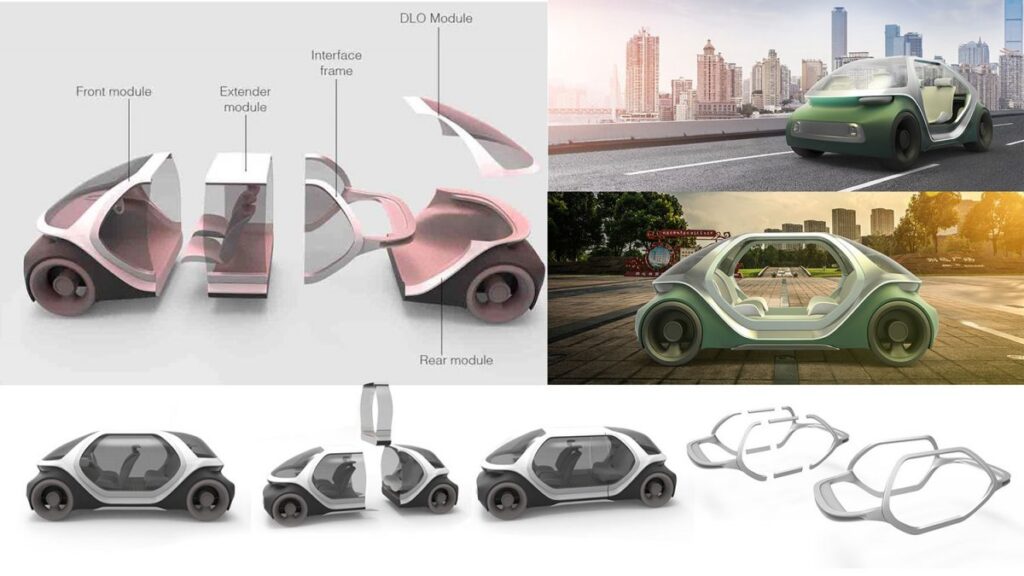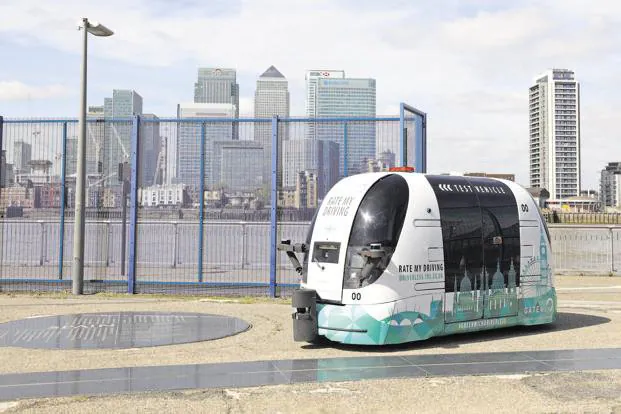
The future of Indian mobility isn’t just about going electric—it’s about going modular, smart, and truly built for Indian roads. Modular Autonomous Vehicles (MAVs) aren’t science fiction anymore—they’re becoming the real deal. If you’re an engineer, startup founder, policymaker, or just someone obsessed with EVs, you’re in for a ride.
Why Modularity Actually Matters (And No, It’s Not Just a Buzzword)
Let’s clear this up early: when we say “modular,” we’re not talking about toy-like Lego cars. We’re talking about real, grown-up vehicles with interchangeable parts that can be upgraded, reused, and reconfigured—saving time, cost, and resources.
Chassis-as-a-Service: The Ground Floor of Innovation
At the heart of modular AVs is a skateboard-style chassis—a flat base equipped with:
- Steering systems
- Electric drivetrain
- Battery pack
- Sensors and AI driving stack
Now imagine placing different “pods” on top—passenger cabins, cargo carriers, or even mobile service units. That’s the beauty of modularity. Startups like Minus Zero and Ati Motors are already experimenting with this model in India.
Made for India: Manufacturing That Makes Sense
India’s EV industry thrives on jugaad—smart workarounds. Modularity fits right in:
- Cut down tooling costs
- Localize pod production per city
- Set up mobile assembly units in Tier 2 or Tier 3 areas
It’s manufacturing that can move as fast as demand does.
How Modular AVs Are Already Working in India

This isn’t a vision board—Indian startups are testing, tweaking, and rolling these machines out.
Public Transit: But Smarter, Sleeker & Swappable
Think about metro feeder systems or airport tarmac shuttles. With modular pods, transit fleets can:
- Attach more pods during peak hours
- Route smartly using real-time AI
- Easily switch from passenger to delivery mode
Cities like Mumbai, Bengaluru, and Delhi are already exploring such flexible, pod-based transport models.
Inside the Factory Gates: Autonomous Workhorses
Ati Motors makes AVs that ferry goods inside factories—no driver, no tracks. Swaayatt Robots takes things up a notch by making AVs that handle India’s wild street conditions.
And yes, the platforms are modular. Whether it’s cold-storage pods or pallet racks, these AVs adapt.
Fleets on the Fly: Upgrade, Swap, Repeat
For companies like Yulu or BluSmart, modular AVs offer a dream:
- Quick battery swaps
- Sensor upgrades without replacing the vehicle
- Switch a ride-sharing pod to a delivery pod in minutes
Welcome to fleet flexibility 2.0.
Why Modularity Wins: From Prototype to Parking Lot
MVPs Made Easy
With modularity:
- You don’t need a full fleet to launch—start with one pod
- Test in safe, closed spaces (like tech parks or airports)
- Localize for climate: dust-proof pods for Jaipur, rain-resistant ones for Kochi
Easier Maintenance = Lower Costs
Got a broken pod? Fix just that. Need better sensors? Replace only the AI module. Fleet managers love this stuff.
Sustainability that’s More Than Just a Hashtag
- Reuse chassis multiple times
- Separate and recycle components easily
- Plan hardware upgrades instead of full replacements
You reduce waste, save money, and extend vehicle life.
Plugging into Smart Cities
Smart cities need smarter wheels—and modular AVs check all the boxes.
Agile Transit: Inspired by Trains, Designed for Cities
There’s this cool idea from MIT called Modular Agile Transit (MAT). Picture pods linking together in real-time. A pod with just one rider joins others on the way, then splits off again.
Ideal for cities like Pune, Navi Mumbai, or even Gurugram.
Let the Infrastructure Do the Heavy Lifting
India’s 5G rollout + edge computing + C-V2X = modular AV heaven:
- Get live traffic/weather updates
- Sync with smart traffic lights
- Offload computing to roadside units
Result? Smarter, safer, and way more reliable AVs.
Policy-Ready, Regulation-Friendly
With Bharat NCAP stepping up on safety standards, modular AVs can:
- Pass crash tests with crumple modules
- Get re-certified after tech upgrades
- Follow localization rules with swappable parts
The Hiccups No One Likes Talking About
India’s Roads Are… Special
AVs must survive:
- Potholes the size of bathtubs
- Curious cows and unpredictable pedestrians
- Power outages and network dropouts
That’s why simulation isn’t enough. On-road trials in real Indian chaos are key.
No One Knows Who’s Responsible (Yet)
Do we have clear AV laws? Not really.
- Who owns the liability? The chassis maker or pod builder?
- How do we certify modular add-ons?
- Can states approve pilots independently?
Policy is lagging. Startups are in limbo.
Funding & Standardization: The Boring But Crucial Bit
This ecosystem needs:
- USB-like standards for modular interfaces
- Shared city-level sandbox programs
- Big OEMs like Mahindra or Tata to open-source base platforms
Without collaboration, it’ll be a fragmented mess.
The Indian Modular AV Ecosystem: Who’s Doing What
| Company | What They’re Building | Modularity Level |
|---|---|---|
| Minus Zero | Self-driving passenger pods | Very High |
| Ati Motors | Industrial AVs for logistics | Medium |
| Swaayatt Robots | Level 4 AVs for Indian roads | High |
| Mahindra | INGLO EV platform (open framework) | Modular-ready |
| Tata Motors | R&D on L5 autonomy | Early Stage |
India’s got the talent—it just needs more mileage (literally).
What Engineers & Planners Should Start Doing Now
Engineers, get your hands dirty:
- Use ROS2, Edge AI, and open APIs
- Build pod-chassis communication layers
- Think 10 years ahead with modular upgradability
Urban Planners & Smart City Experts:
- Set up AV testing zones with C-V2X & charging points
- Push for modular fleet integration in city transit plans
- Work with regulators to fast-track modular AV frameworks
This is India’s blueprint for future mobility. It’s modular, smart, and scalable. Are you ready to plug in?
FAQs
Q1: What exactly is a modular autonomous vehicle?
A vehicle with a base (like a smart skateboard) and swappable top modules (pods). Use one for passengers today, delivery tomorrow.
Q2: Are Indian companies building these already?
Yes! Startups like Minus Zero and Ati Motors are leading the charge, with real prototypes and use cases.
Q3: How can modular AVs help Indian cities?
They can reduce traffic, adapt to real-time demand, and help cities offer smart, sustainable transport.


